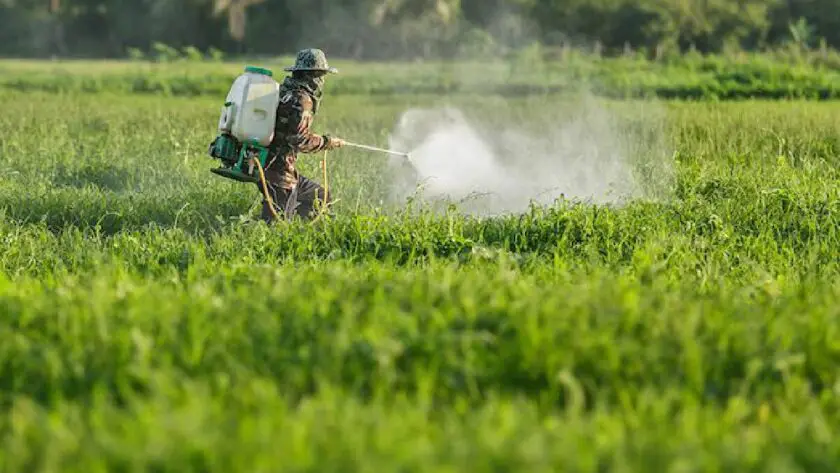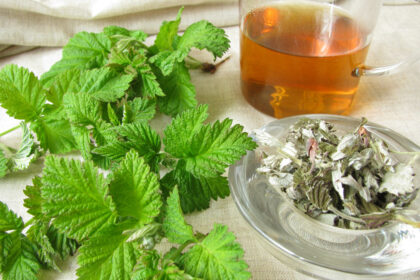A new study is sounding the alarm about the impacts of a common pesticide called atrazine that has been used widely for over 30 years. Research reveals that atrazine is turning male frogs into female frogs in just 3 years by disrupting their endocrine system.
This pesticide has been detected in drinking water supplies across the United States, raising concerns about potential effects on human health, especially hormone disruption.
The study focused on northern leopard frogs in wetlands across the Midwest. What scientists found was startling – after just 3 years of exposure to atrazine at levels deemed safe by the EPA, up to 10% of male frogs had been chemically castrated and turned into completely functioning females able to mate with male frogs and produce viable eggs.
Atrazine works by blocking testosterone production and upsetting the hormonal balance necessary for normal sexual development. The implications are severe as amphibians are sentinel species that indicate problems in an ecosystem long before they affect humans.
If atrazine can wreak this much havoc on frogs in a short time, what could the impacts be on human biology and reproductive health from decades of exposure through drinking water?
The use of atrazine has been banned in Europe since 2004 due to groundwater contamination concerns. However, in the US approximately 70 million pounds of it are applied each year to agricultural fields, much of which runs off into surface waters.
Atrazine is the second most commonly used herbicide after glyphosate. The pervasiveness of this endocrine disruptor in the environment raises critical questions about the chemical burden we are placing on fragile ecosystems, wildlife and ourselves.
What Is Atrazine?
Atrazine is a common herbicide that has been widely used in agriculture for over 50 years to control weeds in crops like corn and sugarcane. Even though it has been banned in the European Union since 2004 due to concerns about groundwater contamination, atrazine continues to be one of the most extensively used pesticides in the United States, with over 70 million pounds applied each year.
This prevalent use has resulted in atrazine regularly being detected in surface waters and drinking water supplies across the country. Research shows that even at levels considered safe by the EPA, atrazine acts as an endocrine disruptor that can alter hormone function and sexual development in wildlife species.
Male frogs exposed to this chemical can be chemically castrated and completely turned into females capable of reproducing. There is also evidence that atrazine increases risks of cancer, birth defects, and reproductive issues in humans.
The pervasive use and detection of atrazine in the environment, along with research about its health impacts, has led to increased concerns about the chemical’s safety and whether current regulations sufficiently protect ecosystems, wildlife and human health. The EPA is re-evaluating the herbicide’s impacts, but some argue its use should be more restricted or banned in the US as it is throughout Europe.
Where Did Atrazine Come From?
Atrazine was first synthesized in the 1950s by scientists at the Geigy chemical company in Switzerland. Here are some more details on the origins of this controversial herbicide:
- Atrazine was developed by Geigy chemists as part of a search for new synthetic triazine herbicides. It was first registered for use in Switzerland in 1958.
- The following year, atrazine was brought to market in the United States by Geigy’s American subsidiary, which later became part of Syngenta through mergers and acquisitions.
- Syngenta, based in Basel, Switzerland, is now the primary manufacturer of atrazine worldwide. The company reported sales of atrazine exceeded $1.1 billion in 2007, and has continued to climb into the trillions as of recently.
- Atrazine was initially welcomed as an affordable and effective way to boost yields of major crops like corn, sorghum and sugarcane. Within five years of launch, it became the most commonly used herbicide in the U.S.
- Usage peaked in the 1990s – up to 80 million pounds were applied annually on over half of all U.S. corn and 90% of sugar cane acres.
- Atrazine was patent protected until the early 1990s, after which cheaper generic versions were introduced. Syngenta still claims about 75% of global sales.
Ecological & Public Health Impacts
If the use of the herbicide atrazine is not better controlled or limited in the near future, studies suggest there could be some concerning ecological and public health impacts for affected countries:
- Aquatic ecosystems may be irreparably damaged – Exposure to atrazine has been shown to chemically castrate male amphibians like frogs and turn them into females at extremely low concentrations. This could lead to reproductive failure and declines of fragile wetland ecosystems.
- Biodiversity loss – The impacts on amphibians and other aquatic life, which are key links in the food chain, could have cascading effects leading to broader disruptions in wildlife populations and biodiversity.
- Contaminated drinking water – With continued heavy usage, atrazine may increasingly infiltrate drinking water supplies. This presents risks of endocrine disruption and developmental issues, even at levels currently considered safe. Expanding water treatment could be costly.
- Higher health care costs – If human reproductive health is impacted over time by atrazine exposure, including increased infertility, there could be rising healthcare and social support costs. This economic burden would impact families and public health budgets.
- Loss of crop productivity – Ironically, continued heavy atrazine use could start reducing yields of crops like corn, as it promotes pest resistance and erodes soil health when overused as part of poor management practices. Reduced agricultural productivity would impact food security and farmers’ livelihoods.
- Lack of trust in regulators – Allowing the ongoing usage of a chemical like atrazine, banned elsewhere for environmental reasons, could erode public trust in the ability of regulators to protect food safety and ecological health.
How To Protect Your Family Against Pesticides/Herbicides
Here are some suggestions for natural solutions that may help protect against potential harms from pesticides like atrazine:
- Eat organic/locally grown – Choosing organic and locally grown foods, especially fruits and vegetables, can reduce pesticide exposure from food sources. Organic produce has stricter restrictions on chemical use, and smaller farms use smarter and safer practices such as rotating crops and livestock to keep their soil healthy, which eliminates the need for pesticides and herbicides.
- Filter water – Using water filters that employ reverse osmosis or activated carbon can remove some pesticide residues. These help reduce exposure from drinking water.
- Support wetlands – Wetland ecosystems help filter out chemical runoff before it reaches water sources. Conserving and restoring wetlands buffers impacts.
- Use natural weed control – Methods like mulching, hand weeding, cover cropping, and controlled burning can reduce reliance on chemical herbicides.
- Plant native species – Choosing native plants, trees, and grass for landscaping requires less pesticide care and protects local ecosystems.
- Buy hormone-free meat – Hormones like estrogen can accumulate in the tissues of livestock exposed to atrazine contaminants. Opting for hormone-free meat reduces exposure.
- Boost immunity – Eating antioxidant and probiotic-rich foods can boost immune health and resilience against toxins. Key items include fruit, fermented foods like yogurt, and herbs like turmeric.
- Support bans – Backing local and national restrictions on hazardous pesticides like atrazine helps accelerate the transition to safer alternatives.
In Conclusion:
The prevalent use of the herbicide atrazine in agriculture presents concerning health and environmental risks. Research shows that even at levels considered safe, atrazine can disrupt endocrine systems and chemically castrate frogs.
Detectable in drinking water supplies across the country, this chemical is banned in the EU, but remains widely used in the US. Without increased regulatory action or farmers transitioning to safer alternatives, atrazine may irreparably damage wetland ecosystems, reduce crop productivity long-term, and contribute to infertility, cancer, and other reproductive issues in humans.
Implementing more natural solutions, from wetland conservation to buying organic produce, could help mitigate risks at an individual level. Ultimately, phasing out hazardous pesticides in favor of integrated pest management will be essential to avoid losing our rich biodiversity and protect the health of current and future generations.
The science leaves little doubt that the use of atrazine should be restricted or the regulatory process has failed in its purpose of safeguarding the public interest.
Peer Reviewed Studies Done On Atrazine
Here are some of the key studies done on atrazine that support the concerns about its environmental and health impacts:
- Hass et al. 2011 – EPA’s most comprehensive monitoring survey detected atrazine in 75% of drinking water sampled and over 40% of all streams.
- Hayes et al. 2010 – Follow up research detected cell damage and hormone disruption in frogs at concentrations as low as 0.1 parts per billion of atrazine.
- Tyrone et al. 2009 – Scientists found exposure to atrazine altered reproductive development in fish and amphibians.
- Rohr et al. 2008 – A meta-analysis of studies showed atrazine exposure significantly increases mortality and decreases diversity across aquatic species.
- Nieves-Puigdoller et al. 2007 – Studied links between elevated atrazine levels in drinking water and increased breast cancer rates in Kentucky.
- Rayner et al. 2007 – Found increased prostate cancer risks for workers in an atrazine production plant.
- Swan et al. 2003 – A study in Missouri found higher rates of birth defects in areas with elevated atrazine in drinking water.
- Hayes et al. 2002 – This study exposed male frogs to levels of atrazine below EPA standards and found hermaphroditism and demasculinization effects.
So in summary, multiple peer-reviewed studies by independent scientists over the past two decades have produced consistent evidence that atrazine is associated with endocrine disruption, developmental issues, and cancer risks even at very low exposure levels.





